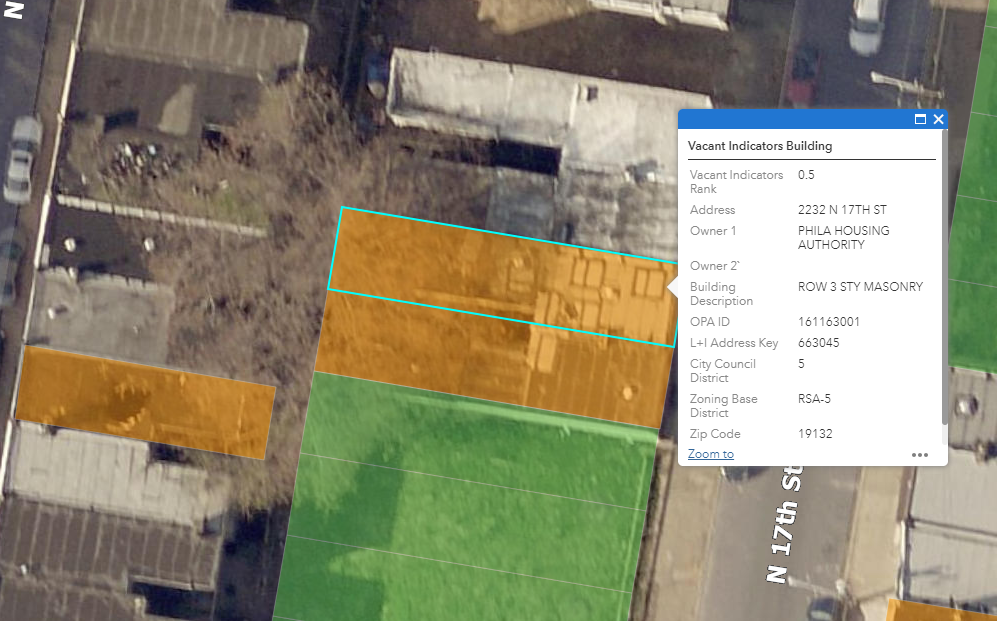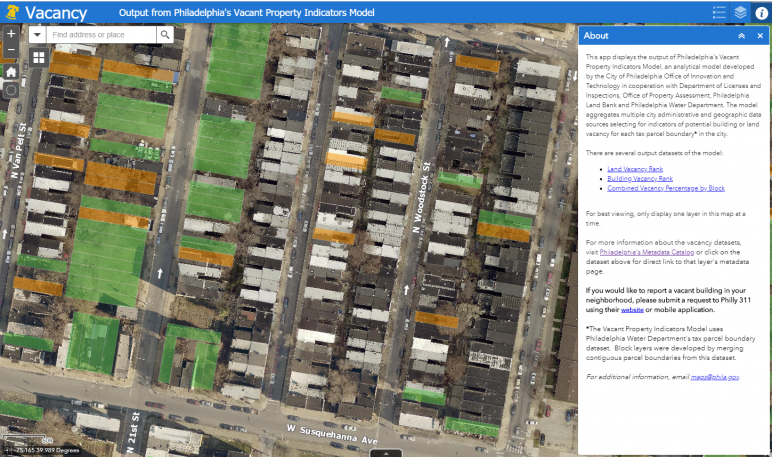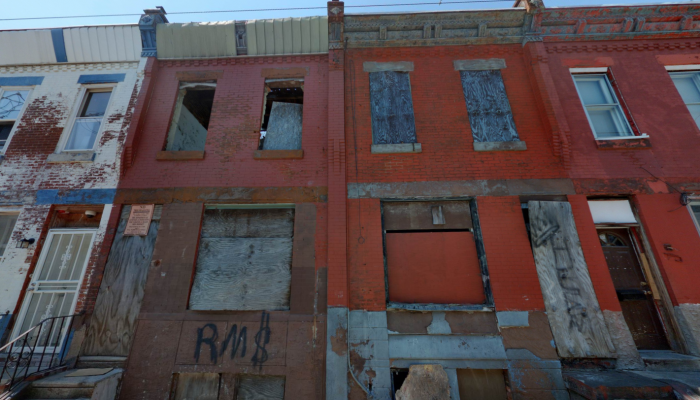Project Leads: Tim Haynes – Senior Lead GIS Analyst
Sara Mattio – Lead GIS Analyst
With over 500,000 buildings in Philadelphia, identifying those that are vacant, or deteriorating is a challenge. The City relies on many methods, such as visual inspection, public reporting, and outstanding violations. Occasionally, vacant homes appear to be occupied and in good condition from the street, making it difficult to get a comprehensive understanding of citywide vacancy purely through observation.
The Office of Innovation and Technology’s CityGeo team, in partnership with several other City departments, developed an innovative and effective solution to the challenge of identifying vacancy — the Vacant Property Indicators Model.
How does the model work?
Vacant properties tend to share some common characteristics, and the Vacant Property Indicators Model uses City’s data to search for these traits to find buildings that are likely to be vacant.
For example, if the natural gas supply to a property has been recently disconnected, it could have switched to electric energy, or it may be unoccupied. On its own, this wouldn’t be enough to know its vacancy status. By combining multiple data characteristics into a model, we can get a clearer picture.
The Vacant Property Indicators Model collects data from the following departments:
- Department of Licenses & Inspections
- Office of Property Assessment
- Philadelphia City Planning Commission
- Philadelphia Land Bank
- Philadelphia Water Department
- Department of Revenue
- Philadelphia Gas Works
We assign property characteristics as either positive or negative indicators of vacancy. A positive indicator tells us that a building may be unoccupied — such as water service that has been disconnected for multiple months. A negative indicator, like an active rental license, means that the property is likely occupied. Our model uses many indicators to come up with a single score, which we use to determine the likelihood of a building or lot being vacant or occupied.

With the Vacant Property Indicators Model, City employees can now identify vacant buildings and lots remotely from their desks, allowing them to more strategically conduct field visits, improve operational efficiency, and develop a more comprehensive approach to tackling vacancy.
Try the Vacant Property Indicators Model today on the City of Philadelphia’s Vacancy Map!

NOTE:
The Department of Licenses and Inspections determines vacancy through “an active vacancy license or the combination of Building Inspector observations documenting exterior conditions of a property (piled newspapers or trash, boarded up windows) and a review of the property’s history of code violations.” Although this model can assist in identifying properties that are likely to be vacant, the property will not officially be determined as vacant until the above procedures are carried out by L+I.




